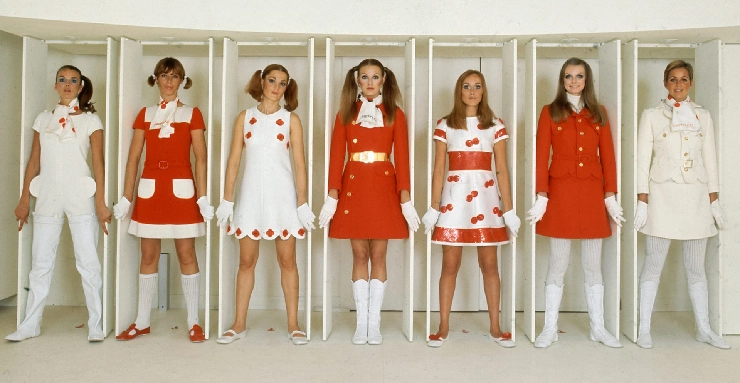
André Courrèges (9 March 1923 – 7 January 2016) was a revolutionary figure in 20th-century fashion, known for his avant-garde style and profound impact on the aesthetics of the 1960s. Born in Pau, France, Courrèges initially started his career in engineering, studying at the “National School of Bridges and Roads”. His engineering background would later profoundly influence his precise, structured approach to fashion design.
After World War II, Courrèges shifted his focus to fashion, starting his career at a tailor’s shop before moving to Paris to work under Cristobal Balenciaga. Balenciaga’s mastery of technique and sculptural approach to fashion significantly influenced Courrèges, shaping his understanding of garment construction and design. In 1961, after spending a decade honing his craft under Balenciaga, Courrèges founded his own fashion house, “Maison de Courrèges”, with his partner and future wife, Coqueline Barrière.
Courrèges’s pioneering designs featured geometric shapes, stark white and bold colors, and new materials such as vinyl. His designs emphasized comfort, freedom of movement, and youthfulness, marking a departure from the more restrictive fashion of previous decades. His most iconic contributions included the miniskirt, which he is often credited with inventing alongside Mary Quant, and the “moon girl” look that included flat boots, googles, and helmets, reflecting the era’s fascination with space exploration.
One of the designer’s signature achievements was the introduction of the A-line dress in 1965, characterized by its lack of a defined waist and its crisp, clean lines. This silhouette came to define the mod look of the 1960s and had a lasting impact on women’s apparel. His work during this period not only transformed the fashion landscape but also echoed the societal shifts toward youth culture and the emerging feminist movements.
Innovation continued to be a hallmark of Courrèges’ career even beyond the 1960s. In the 1970s, he ventured into menswear and developed a new interest in sustainability, experimenting with materials and advocating for environmental consciousness in fashion—a concept far ahead of its time.
Despite stepping back from day-to-day operations in 1994, Courrèges’ influence remained pervasive. The brand underwent a revival in the 2010s, continuing to draw on its foundational themes of innovation, simplicity, and futurism.
André Courrèges passed away in the beginning of 2016, but his legacy endures, characterized by his visionary contributions to fashion that reshaped how clothing could express the future. His work not only reflected the technological optimism of his time but also set a precedent for the integration of fashion and modernity, marking him as one of the most influential designers of the modern era.
The post Andre Courreges appeared first on The Fashiongton Post.
